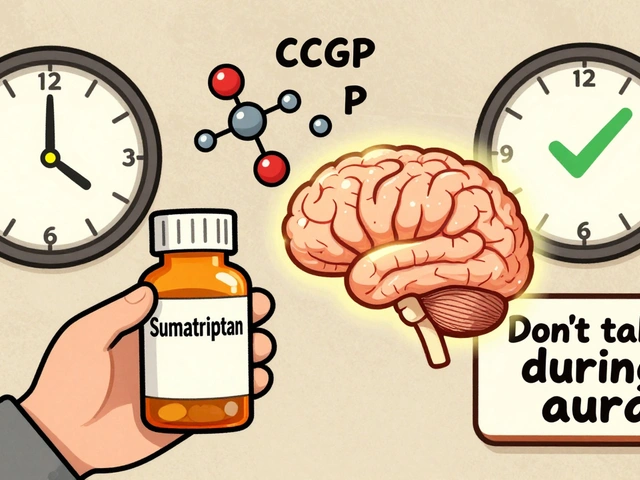Introduction to Methylprednisolone and Its Therapeutic Importance
As a blogger with an interest in health and medicine, I've found it fascinating to delve into the world of pharmaceuticals. One drug that has piqued my interest is Methylprednisolone. It's a medication that has garnered a lot of attention, especially in the field of medicine. This synthetic corticosteroid is widely used in healthcare to treat a plethora of conditions, from allergies and asthma to autoimmune diseases and even certain types of cancer. Its widespread use is a testament to its efficacy, but what exactly happens when this drug enters our body? That's what we're going to explore today.
The Biochemistry Behind Methylprednisolone
Before we delve into the mechanism of action of Methylprednisolone, it's important to understand its biochemical nature. Methylprednisolone is a synthetic corticosteroid, which means it mimics the action of certain hormones that your body naturally produces. In particular, it mimics cortisol, a hormone that is essential in regulating a wide array of processes in our bodies, including our immune response and inflammation. With this background, let's dive into how Methylprednisolone works.
Understanding the Interaction with Glucocorticoid Receptors
The primary mechanism of action of Methylprednisolone involves the glucocorticoid receptors in our bodies. Once administered, the drug enters our cells and binds to these receptors, which are typically located in the cell's cytoplasm. This binding triggers a series of events, leading to the activation of the receptors. The activated receptor-drug complex then moves into the cell nucleus, where it binds to specific regions of our DNA, influencing the transcription of certain genes.
Regulating the Immune Response
The genes influenced by Methylprednisolone are primarily those that regulate our immune response. By binding to the glucocorticoid receptors, Methylprednisolone can reduce the production of chemicals that trigger inflammation and immune response. This includes cytokines and chemokines, substances that would typically attract white blood cells to the site of an infection or injury. By reducing their production, Methylprednisolone effectively dampens the immune response, providing relief from symptoms in conditions where the immune system is overactive, such as in autoimmune diseases or allergies.
Inhibiting Inflammation with Methylprednisolone
Methylprednisolone also has a significant anti-inflammatory effect. This is achieved by inhibiting the production of various substances that cause inflammation. For example, it suppresses the production of prostaglandins and leukotrienes, chemicals that trigger inflammation and increase the permeability of our blood vessels. By suppressing these chemicals, Methylprednisolone helps to reduce swelling, redness, and pain, which are common symptoms in many inflammatory conditions.
Exploring the Potential Side Effects of Methylprednisolone
Like any other medication, Methylprednisolone can have potential side effects. These can range from minor issues like nausea or headaches to more serious complications such as increased susceptibility to infections due to its immune-suppressing effects. Long-term use can also lead to problems like osteoporosis, high blood pressure, and weight gain. However, it's important to remember that your doctor will always weigh the benefits against the potential risks before prescribing this medication.
Conclusion: The Potent Power of Methylprednisolone
In conclusion, the mechanism of action of Methylprednisolone is truly fascinating. It's a potent drug that can regulate our immune response and dampen inflammation, providing relief for a wide array of conditions. Understanding how it works not only provides a deeper appreciation of its therapeutic power but also highlights the importance of responsible use to avoid potential side effects. As we continue to learn more about drugs like Methylprednisolone, we come closer to harnessing their full potential in improving health and wellbeing.










Great rundown on methylprednisolone-its steroid backbone and receptor action are spot‑on.
The mainstream narrative glorifies glucocorticoids while conveniently omitting the hidden metabolic agenda they enforce.
They’re pitching it as a miracle anti‑inflammatory, yet the long‑term epigenetic fallout remains buried.
From a patriotic health‑policy view, methylprednisolone is a tactical asset-our troops rely on its swift immunosuppression in combat zones.
Its ability to curb cytokine storms can be the difference between a soldier returning home and a casualty.
Just a heads‑up-if you’re starting this steroid, taper slowly to give your adrenal glands a chance to bounce back.
Skipping the taper can leave you feeling drained and prone to infections.
Oh wow, another post about steroids-because we definitely needed *more* excitement about hormone receptors!!!
Who wouldn’t love a drug that talks to your DNA like it’s sending a group text???
Methylprednisolone functions as a high‑affinity agonist of the intracellular glucocorticoid receptor, inducing conformational changes that facilitate nuclear translocation. Upon entry into the cytoplasm, the ligand‑receptor complex dissociates from heat‑shock proteins, thereby exposing the DNA‑binding domain. Once within the nucleus, this complex binds glucocorticoid response elements (GREs) upstream of target genes, modulating transcriptional activity. The net effect includes up‑regulation of anti‑inflammatory mediators such as annexin‑A1 and suppression of pro‑inflammatory cytokines like IL‑1β, IL‑6, and TNF‑α. Moreover, methylprednisolone exerts transrepressive actions on NF‑κB and AP‑1 pathways, curtailing the expression of COX‑2 and iNOS enzymes. This dual mechanism-genomic transactivation and transrepression-underpins its clinical efficacy in a spectrum of inflammatory disorders. Pharmacokinetically, the drug displays a rapid distribution phase with a volume of distribution approximating 0.5 L/kg, followed by hepatic metabolism via CYP3A4 to inactive metabolites. Its plasma half‑life, ranging from 18 to 36 hours, supports once‑daily dosing in many protocols. Importantly, the downstream effects on leukocyte trafficking involve reduced expression of adhesion molecules such as ICAM‑1, limiting extravasation. The drug also attenuates chemokine gradients by down‑regulating CXCL8 production, thereby diminishing neutrophil recruitment. Clinically, these molecular actions translate to decreased edema, erythema, and pain in conditions like asthma exacerbations and rheumatoid arthritis flares. However, the systemic immunosuppression carries an increased risk of opportunistic infections, necessitating vigilant monitoring. Long‑term exposure can provoke hypothalamic‑pituitary‑adrenal axis suppression, which manifests as secondary adrenal insufficiency upon abrupt cessation. Additionally, glucocorticoid‑induced osteoblast apoptosis contributes to bone demineralization, underscoring the need for calcium and vitamin D supplementation. In sum, methylprednisolone’s intricate pharmacodynamics and pharmacokinetics demand judicious prescribing to balance therapeutic gain against adverse sequelae.
Remember to pair the steroid with calcium and vitamin D to protect bone health.
Hey, just tossing in a tip: drinking plenty of water can help the kidneys flush out steroid metabolites faster.
Honestly, the post skimmed over the HPA‑axis feedback loop-big oversight for an otherwise decent overview.
While the anti‑inflammatory benefits are undeniable, the long‑term cardiometabolic costs often outweigh short‑term gains.
Thanks for the clear summary 😊. This helps a lot for my cousin who’s on steroids.
Ah, the hidden layers of methylprednisolone! It’s like a covert operative infiltrating our genome, whispering secrets to our cells-only we’re the unsuspecting host!!!
Every time I read about glucocorticoid receptors, I feel a chill run down my spine, as if the drug is a puppeteer pulling invisible strings!!!
Bottom line: use it when needed, but keep an eye on the dosage.
Oh my god, the steroid saga is a theatrical tragedy, complete with rising action, climax, and an inevitable downfall!!!
We’re all just actors on the stage of inflammation, and methylprednisolone is the diva that steals the spotlight!!!
Actually, non‑steroidal options can achieve similar outcomes without the hormonal baggage.
Let’s keep the discussion respectful and focus on patient safety.
I feel for those battling side effects-support groups can make a huge difference.
Stay positive, folks! With proper monitoring, the benefits can outweigh the risks.
The ethical calculus of prescribing potent immunomodulators invites a deeper contemplation of beneficence versus non‑maleficence.
Prescribe methylprednisolone only when evidence unequivocally demonstrates superiority over alternatives